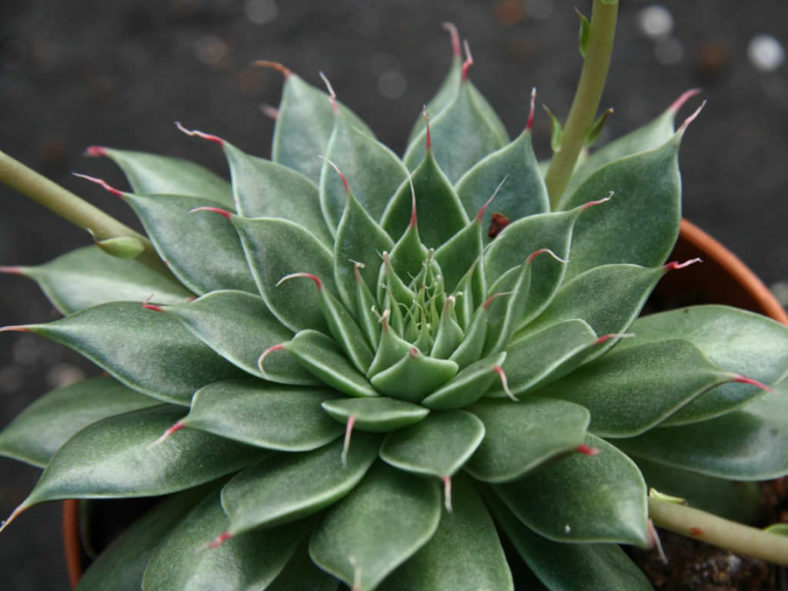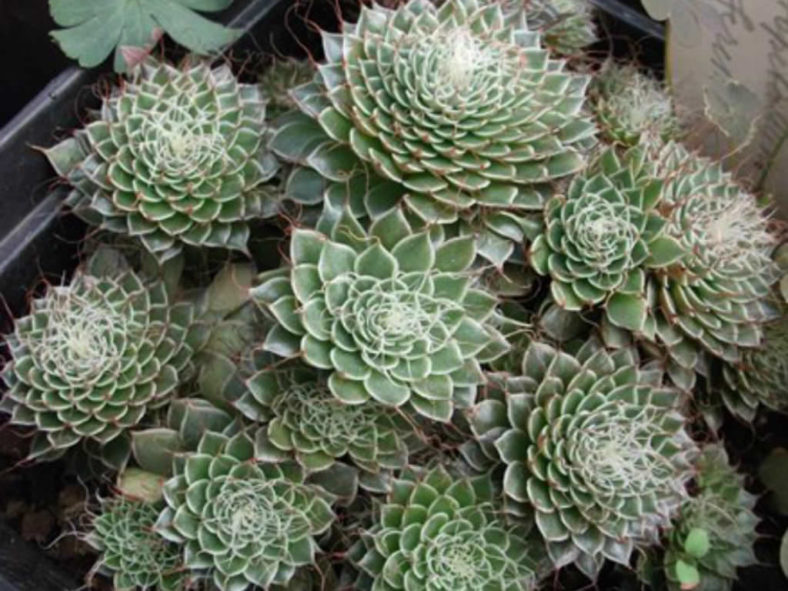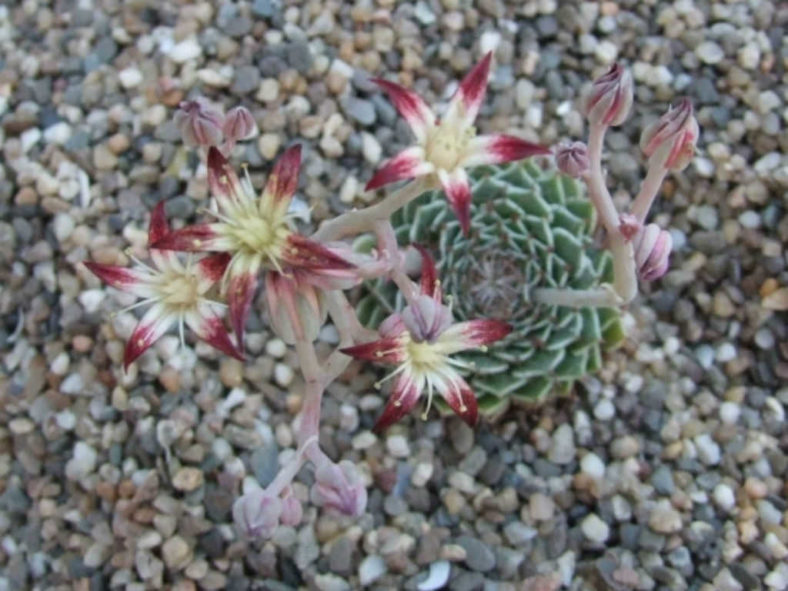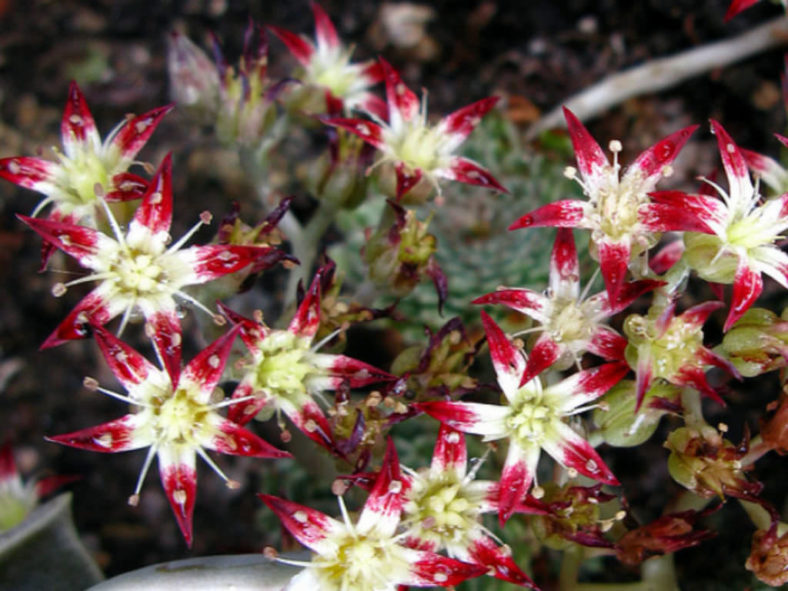Scientific Name
Graptopetalum filiferum (S.Watson) Whitehead
Synonym(s)
Sedum filiferum
Scientific Classification
Family: Crassulaceae
Subfamily: Sedoideae
Tribe: Sedeae
Subtribe: Sedinae
Genus: Graptopetalum
Etymology
The specific epithet "filiferum" (pronounced "fil-LIF-er-um") means "thread-bearing" and refers to the bristle-like tip of the leaves of this species.
Origin
Graptopetalum filiferum is native to Mexico (Chihuahua). It grows on rocks at elevations around 7,050 feet (2,150 m).
Description
Graptopetalum filiferum is a unique succulent that forms short-stemmed rosettes of metallic green leaves with hyaline margins and a characteristic long, bristle-like, reddish-brown tip. The rosettes are almost flat to the ground, have 75 to 100 leaves, and can reach a diameter of up to 4 inches (10 cm). The leaves are fleshy, glabrous, and spatulate, measuring up to 1.2 inches (3 cm) in length and 0.5 inches (1.2 cm) in width.
The flowers are star-shaped, typically 5- to 6-merous, white, and apically marked with bright, dark brownish-red blotches. They appear in late spring and early summer.

Hybrids of Graptopetalum filiferum
How to Grow and Care for Graptopetalum filiferum
Hardiness: USDA hardiness zones 9b to 11b: from 25°F (-3.9°C) to 50°F (10°C).
The rules for Graptopetalums care are similar to those for most succulents. All require lots of sunlight to look their best. They require gritty, well-drained soil. Water the plants regularly over the summer, allowing the soil to dry out between waterings. Minimal water is required over winter. Overwatering is a common cause of root rots, and the plant can also become susceptible to several pest infestations. Fertilize once during the growing season with a balanced fertilizer diluted to 1/4 strength.
Graptopetalums are generally easily propagated by seeds, leaf cuttings, or offsets. Any rosette that breaks off has the potential to root and start a new plant. Even a leaf that drops off will quickly root below the parent plant and produce a new rosette. The new plant feeds off the leaf until it shrivels and falls off. By then, the new little plant had rooted and sprouted new leaves.
See more at How to Grow and Care for Graptopetalum.
Links
- Back to genus Graptopetalum
- Succupedia: Browse succulents by Scientific Name, Common Name, Genus, Family, USDA Hardiness Zone, Origin, or cacti by Genus
Photo Gallery


